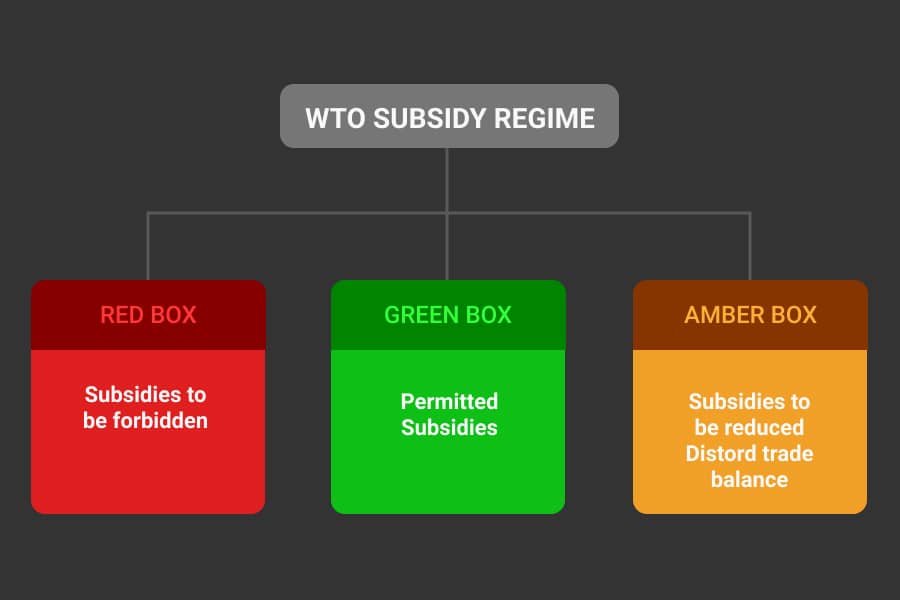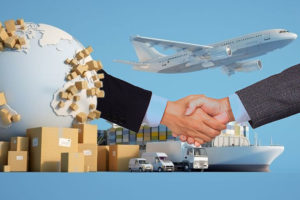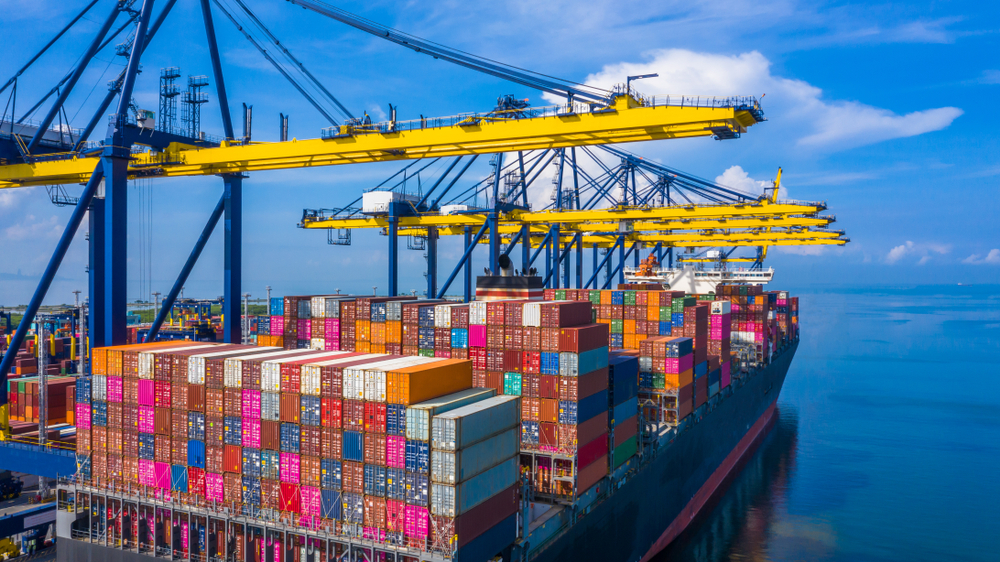De minimis
The World Trade Organisation (WTO) defines de minimis as the “minimal amounts of domestic support that are allowed even though they distort trade — up to 5% of the value of production for developed countries, 10% for developing”.

Introduction:
The World Trade Organisation (WTO) allows governments to offer subsidies to different sectors. It broadly categorises these subsidies into three different “Boxes” which are given the colours of traffic lights: green (permitted), amber (be reduced), red (forbidden). The Agriculture Agreement has no Red Box, although it has a Blue Box for subsidies that are tied to programmes that limit production. It is here that the concept of ‘de minimis’ becomes important. The WTO defines de minimis as the “minimal amounts of domestic support that are allowed even though they distort trade — up to 5% of the value of production for developed countries, 10% for developing”.
Amber Box:
34 WTO members, including Argentina, Australia, Brazil, Canada, EU, Japan, Mexico, New Zealand, Norway, Thailand and the USA have committed to reducing their trade-distorting domestic supports in the Amber Box. In other words, they have committed to reduce the “total aggregate measurement of support” or AMS. Other members have to keep within 5% of the value of production (i.e. the “de minimis” level) — 10% in the case of developing countries.
Green Box:
These refer to those government-funded subsidies that do not distort trade, or at most cause minimal distortion. They must not involve price support. They are not directed at particular products, and include measures like direct income supports for farmers that are not related to current production levels or prices. Environmental protection and regional development programmes also fall within the ambit of this subsidy.
Blue box:
Seen as an interim or transitional measure to help subsidizing countries move away from Amber Box subsidies, the blue box is an exemption from the general rule that all subsidies linked to production must be reduced or kept within defined minimal (“de minimis”) levels. These incorporate payments directly linked to acreage or animal numbers, but under schemes which also restrict production by levying production quotas or requiring farmers to set aside part of their land.
Special treatment
Some developing countries like India have time and again stressed their argument that small vulnerable economies need special treatment, including trade preferences and longer times to adjust. This treatment allows the following benefits:
- Longer duration for implementing Agreements (like TRIPs, GATS etc) and commitments.
- Measures to enhance trading opportunities for developing countries.
- Provisions requiring all WTO members to protect the trade interests of developing countries.
- Helping developing countries to build the capacity to carry out WTO work, handle disputes, and implement technical standards.
However, developed nations like the US & EU have time & again objected to this citing the rise of China after joining the WTO in 2001 as a proof that developing countries don’t need a special deal.













Leave a comment